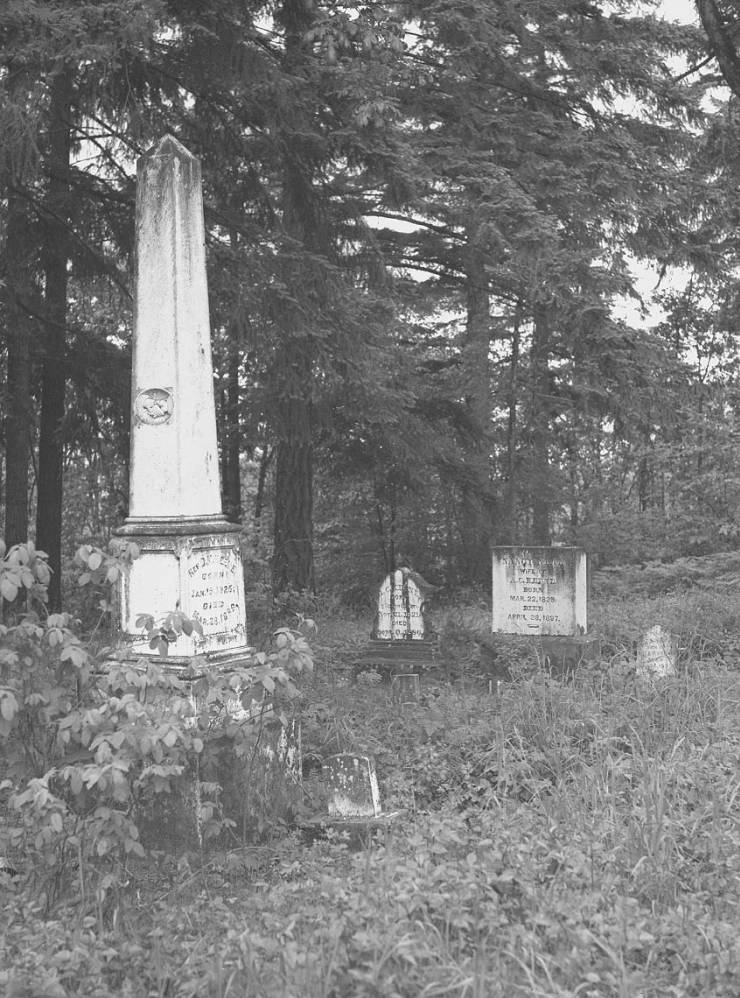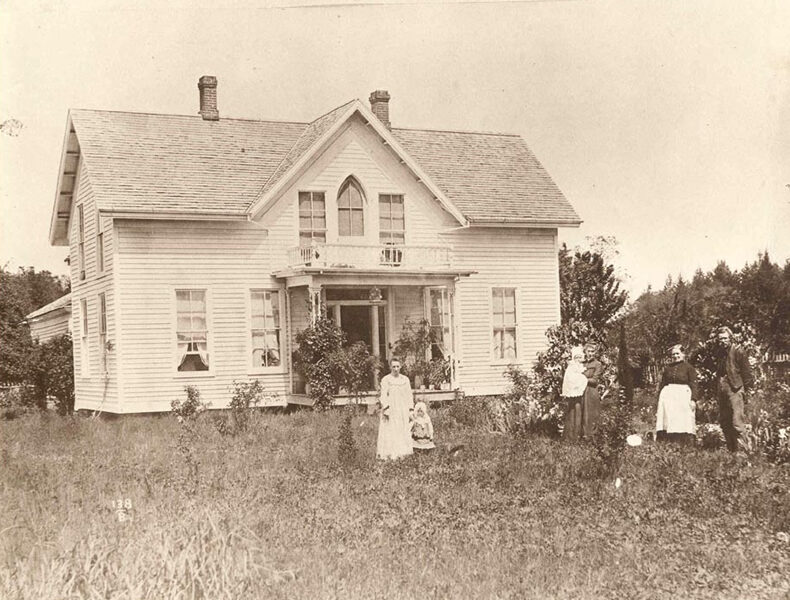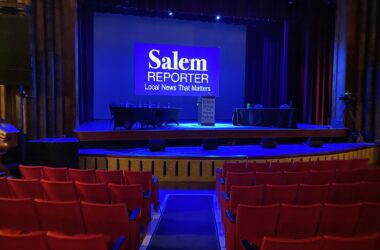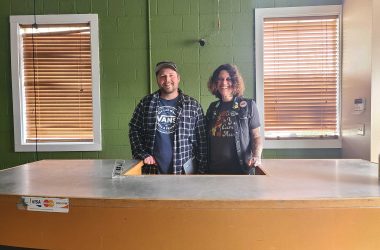As the city of Salem goes through its historic Ben Maxwell photo collection, Kimberli Fitzgerald, Salem’s historic preservation officer, is reviewing the text accompanying photos and sharing her findings with readers.
I never realized that we actually have several ghost towns here in the Willamette Valley. According to Visit Oregon, Oregon has the highest number of ghost towns in the country, with about 200.
I was also surprised to discover that there is actually a state statute that defines what a ghost town is: essentially a town of historic interest where nobody lives. Most of Oregon’s ghost towns are in central, eastern or southern Oregon, and many were associated with the early gold rush in the 19th century, such as Golden, a ghost town near Medford listed on the National Register of Historic Places.
As part of my work researching our Ben Maxwell photo collection, I was surprised to stumble upon some pictures from the town of Fairfield, a ghost town right here in the Willamette Valley.
The Maxwell Collection contains several photos of the Fairfield Cemetery. One of these has a caption that refers to Fairfield as a “ghost town.”

The earliest burial here was Mary Keene, who was only 9 years old. She drowned in a flood on Nov. 7, 1861, and was the first burial in the cemetery. Her uncle, Reverend David Madison Keene has the tallest monument in the cemetery, which can be seen prominently in the Maxwell photo.
But what happened to the town of Fairfield? There are no clear structures defining that a town ever existed. Some of Oregon’s “ghost towns” actually have structures, or other clear evidence that people once lived there. Fairfield just appears to have its cemetery in an area surrounded by farms. Historic newspapers provide some clues about the early growth of this town. The Weekly Oregon Statesman published an article on June 8, 1852 describing a new grain warehouse constructed at Fairfield by Benjamin Simpson, which had also been referred to locally as “Simpson’s Landing.”
The following year, the Weekly Oregon Statesman published an article on Jan. 22, 1853 describing a new elegant steamer known as the “Oregon” that Simpson built, which would soon be taking regular trips up the Willamette. The Oct. 13, 1855 Weekly Oregon Statesman published an account of a visitor to the Oregon Territory who had traveled through Fairfield. The unnamed gentleman wrote about taking the steamer “Canemah” a small town just above the falls near Oregon City up the Willamette River to Fairfield. He described: “In this place are eight houses, two of them unoccupied, a post office, two stores, a wheel-wright shop and a warehouse for shipping grain. The inhabitants say it is bound to be a place some day (but it is not to be found in this year’s almanac.)”
The Marion County Surveyor records have information about Fairfield. From these records it can be confirmed that Fairfield was located about sixteen miles north of Salem primarily on John Peebles Donation Land Claim (DLC No. 73). Despite the newspaper accounts of a small growing community in 1855, it would be ten years before the town of Fairfield was platted by surveyor S.D. Snowden in October 1865. It would take another 27 years before it was officially recorded with the Marion County surveyor.

Our Ben Maxwell collection has a photo of the Fairfield School (Ben Maxwell Photo ID 6002). This photo was taken in 1956.

In 1955, Ben Maxwell wrote an article called “Fairfield Interesting Spot” in Volume 1 of the “Marion County History,” published by the Marion County Historical Society. He states the following about the Fairfield school: “Fairfield school, landmark of 1858, was suspended in 1948 because the building was considered unsafe. Then, after ninety years of usage, it appears to have been the oldest operative public school in Oregon. During that long career this schoolhouse occupied three different sites.””
Marion County recorded a survey in Fairfield in 1908 which shows the donation land claim properties owned by Byrd and Peebles, and which shows Fairfield’s warehouse still along the river, a store as well as a small lot owned by Miller. Marion County survey records further confirm that Miller’s lot was sold in 1910 to the school district. Later recorded surveys at least through the 1930s confirm that this lot was owned and used by the school district. Additional research will need to be completed to confirm both the exact construction date of the school as well as the location(s) the building occupied.
Maxwell’s 1955 article has a lot of really interesting details about Fairfield, which appears to have had a small but thriving community through the turn of the twentieth century. It was still not clear what happened to Fairfield to cause its demise. It appears as though Fairfield began to decline, with people and businesses moving away just as the construction of the railroad and other transportation technology was improving.
In the late 19th and 20th century in the Willamette Valley, the river no longer became the ideal method to transport grain and other agricultural goods. A railway hub was established in the nearby town of Gervais, and soon the town of Fairfield was no longer a destination for farmers to transport their goods. F.R. DuRette sheds some light about Fairfield in his memoir published in the Gervais Star on March 28, 1930. DuRette had been born in Fairfield in 1860 and was able to recall what happened to many of the structures of the town. Many buildings were moved to nearby farms, to be used for storage, or converted for other uses. Some buildings, like Fairfield’s first warehouse and the store were lost to fire. Another of Fairfield’s warehouses was dismantled and the wood used for other purposes. Finally on March 5, 1939 the Marion County surveyor recorded the vacation of the original Fairfield town plat.
Maxwell wrote: “Fairfield, a Marion County grain port of the 1850s and 1860s, is now just another ghost town. Little remains of the original settlement, and, in view of the housing shortage, it may be believed that the ghost will soon seek residence elsewhere.”
To read Ben Maxwell’s full article, and see some additional historic photos and maps of the historic town of Fairfield, please visit: https://www.willametteheritage.org/fairfield/
To learn more about Oregon’s ghost towns check out the Oregon Secretary of State’s online exhibit.
The Ben Maxwell Collection consists of more than 5000 photographs donated to the Salem Public Library by the estate of Mr. Ben Maxwell, a noted Salem photographer and historian who died in 1967. Mr. Maxwell was a native of Salem where he was born in 1898. He attended college at Oregon State University where he studied history and journalism. He started working with the Capital Journal newspaper in 1939. Because he packed his camera on every quest for historical stories, he was able to illustrate his articles for readers of the Capital Journal, the Oregon Journal, the Oregonian, and several magazines.
He recorded on film at least 13 governors, old-timers now gone, covered bridges now missing, and buildings and homes no longer standing. The collection includes copies of rare early Oregon photographs taken by others which have in turn been copied over and over by later researchers and feature story writers. This collection is a work in progress and many additional photographs remain to be scanned. The collection can be accessed at: https://photos.salemhistory.net/digital/collection/max
The City of Salem’s Historic Preservation Program staff within the Community Development Department in collaboration with the Salem Historic Landmarks Commission are in the process of completing an inventory of this collection and working to confirm and verify the content and narratives associated with all the photographs in this collection. Please contact Salem’s Historic Preservation Officer, Kimberli Fitzgerald at [email protected] , with any suggestions, historic facts, or questions you might have about these historic photos.
STORY TIP OR IDEA? Send an email to Salem Reporter’s news team: [email protected].
SUPPORT OUR WORK – We depend on subscribers for resources to report on Salem with care and depth, fairness and accuracy. Subscribe today to get our daily newsletters and more. Click I want to subscribe!
Kimberli Fitzgerald is the city of Salem's archeologist and historic preservation officer. She is a regular contributor to Salem Reporter's local history column.









